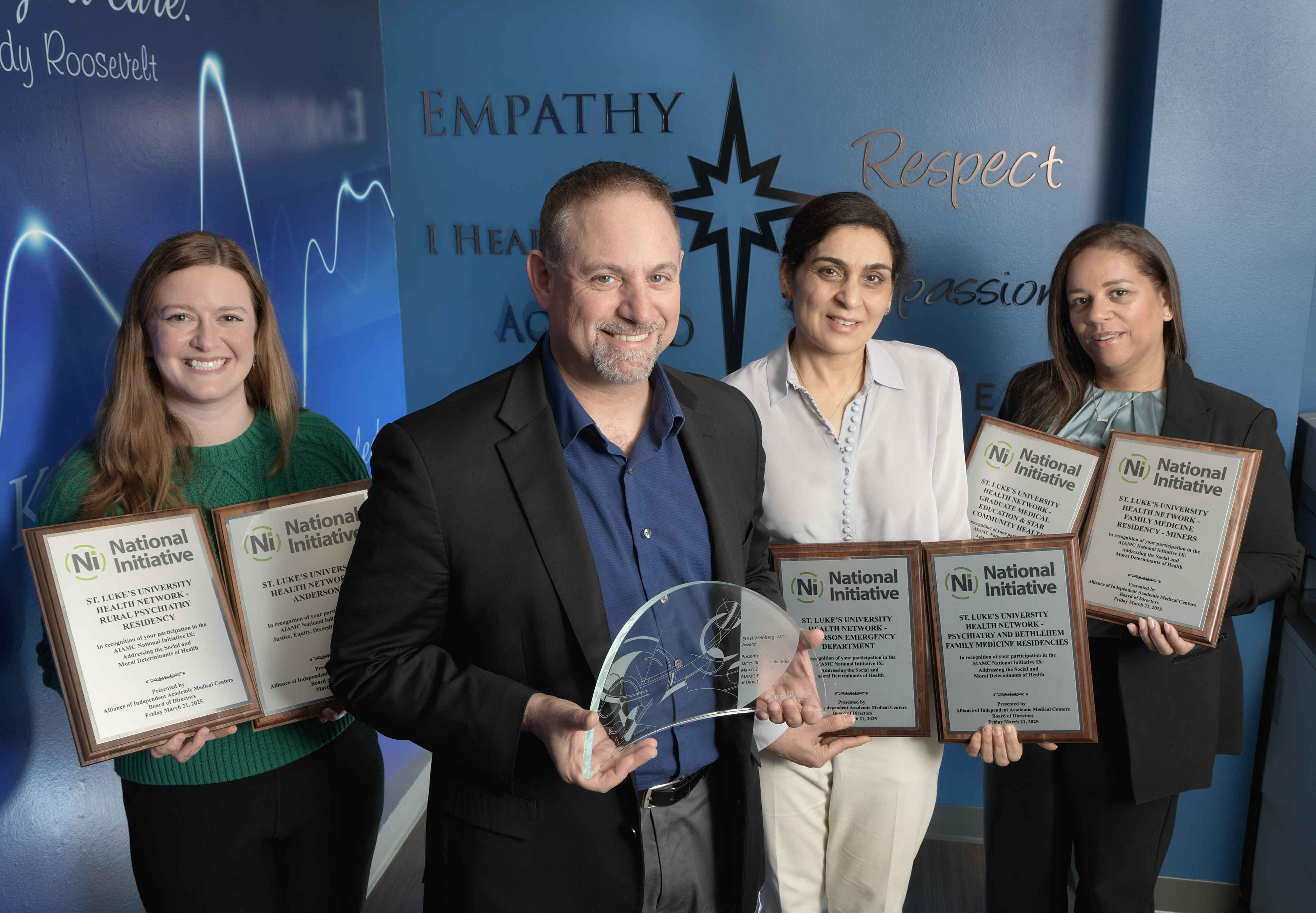St. Luke’s Offers Heart-Sparing Radiation Therapy for Breast Cancer
May 27, 2016
Bethlehem, PA (5/27/2016) – When a woman is diagnosed with breast cancer, radiation therapy is often part of the treatment plan for those receiving breast-conserving surgery or mastectomy to reduce the chance of cancer recurrence. Results based on older technology have shown, along with cancer control, attention to radiation injury to normal structures is imperative. This is especially important for left-sided breast cancers where the heart may be in close proximity. Minimizing radiation dose to the heart prevents risk of heart disease long term.

St. Luke’s now offers sophisticated cardiac-sparing radiation therapy for left-sided breast cancer utilizing state-of-the-art technology known as the Optimal Surface Monitoring System (OSMS) along with deep inspiration breath hold (DIBH) technique. The highly precise tracking system is fully integrated with the movement of the patient as she receives cancer-fighting radiation therapy.
Cameras set in the treatment room gather patient surface data real time and compare to planned parameters set to limit cardiac exposure, according to Nimisha Deb, MD, Section Chief of Radiation Oncology for St. Luke’s University Health Network. “The integration of OSMS and the machine allows the radiation beam to stop when there is a mismatch not relying on human delay, making this very fast and precise,” says Dr. Deb.
OSMS, in combination with the breath hold technique, provides unprecedented accuracy, tracking the surface of the breast incredibly precisely to prevent radiation exposure to the heart. “Our goal is to provide the best outcome for the patient with maximum safety and fewer side effects—both immediately and long-term,” says Dr. Deb. “In addition, this technology is fast and comfortable for patients.”
Women with breast cancer may also receive chemotherapy as part of their treatment. “While necessary to fight the cancer, some chemotherapy drugs may affect the heart as well. So, by keeping radiation away from the heart, we can limit any cumulative damage that may result from life-saving breast cancer treatments and better safeguard a woman’s long-term health,” says Dr. Deb.
The OSMS technology is an essential component for the delivery of frameless radiosurgery, allowing highly accurate, high dose delivery. St. Luke’s is the first and still the only facility in the region to offer frameless cranial radiosurgery.
At St. Luke’s, radiation oncologists work closely with a leading team of surgical oncologists, medical oncologists, neurosurgeons, regional physicians, oncology nurses and cancer support staff to ensure patients receive the most up-to-date treatment to allow for the best chance for survival in a time-sensitive manner. St. Luke’s achieved the highest level of quality and patient safety in Radiation Oncology, earning a three-year accreditation by the American College of Radiology (ACR).
Read More News

Nimisha Deb, MD
Cameras set in the treatment room gather patient surface data real time and compare to planned parameters set to limit cardiac exposure, according to Nimisha Deb, MD, Section Chief of Radiation Oncology for St. Luke’s University Health Network. “The integration of OSMS and the machine allows the radiation beam to stop when there is a mismatch not relying on human delay, making this very fast and precise,” says Dr. Deb.
OSMS, in combination with the breath hold technique, provides unprecedented accuracy, tracking the surface of the breast incredibly precisely to prevent radiation exposure to the heart. “Our goal is to provide the best outcome for the patient with maximum safety and fewer side effects—both immediately and long-term,” says Dr. Deb. “In addition, this technology is fast and comfortable for patients.”
Women with breast cancer may also receive chemotherapy as part of their treatment. “While necessary to fight the cancer, some chemotherapy drugs may affect the heart as well. So, by keeping radiation away from the heart, we can limit any cumulative damage that may result from life-saving breast cancer treatments and better safeguard a woman’s long-term health,” says Dr. Deb.
The OSMS technology is an essential component for the delivery of frameless radiosurgery, allowing highly accurate, high dose delivery. St. Luke’s is the first and still the only facility in the region to offer frameless cranial radiosurgery.
About St. Luke’s Radiation Oncology Department
Radiation oncology services are available at St. Luke’s Cancer Centers in Allentown, Bethlehem and Easton. St. Luke’s was recently named a reference site for Varian Medical Systems, allowing health care professionals from around the country to see Varian’s radiation oncology treatments in a clinical setting and afford the opportunity to learn of its capabilities and benefits to patients. St. Luke’s continues to acquire and utilize the most sophisticated technologies in radiation oncology, where the technology is changing at a remarkable rate.At St. Luke’s, radiation oncologists work closely with a leading team of surgical oncologists, medical oncologists, neurosurgeons, regional physicians, oncology nurses and cancer support staff to ensure patients receive the most up-to-date treatment to allow for the best chance for survival in a time-sensitive manner. St. Luke’s achieved the highest level of quality and patient safety in Radiation Oncology, earning a three-year accreditation by the American College of Radiology (ACR).
Read More News
Latest News


April 10, 2025
National Recognition for SLUHN Graduate Medical Education

April 09, 2025
In Safe Hands Award

April 08, 2025